All Blogs
AI-Driven Lead Attribution Models: Understanding the Customer Journey
- Sunnyraj Agarwal
- 2 November 2023

In the dynamic landscape of modern business, the ability to track and understand the customer journey is paramount. Enterprises today recognize that deciphering how potential customers move through their sales funnel is crucial for optimizing marketing strategies, increasing conversion rates, and driving revenue growth.
One of the key tools at their disposal for this purpose is lead attribution models. In this comprehensive guide, we delve into the intricacies of AI-driven lead attribution models and their significance in customer journey analysis.

What is Attribution Modeling and Why It Matters?
Attribution modeling is the practice of assigning credit to the various touchpoints or interactions a potential customer has with a business before making a conversion. These interactions could range from clicking on an ad, visiting a website, engaging with social media content, or even interacting with an AI-powered chatbot.
Attribution modeling is vital because it sheds light on which marketing channels and strategies are most effective in driving conversions. This insight enables businesses to allocate their resources optimally, refine their marketing campaigns, and enhance their ROI.
The process is far from straightforward, as the customer journey is often intricate and involves multiple touchpoints over an extended period. This complexity necessitates advanced tools and techniques, making AI-driven lead attribution models an invaluable resource in modern marketing.
Give Me Three Real-Life Examples of Lead Attribution Modeling
1. E-Commerce Conversion:
Imagine a potential customer searching for a specific product online. They might click on a paid search ad, browse through your website, leave, return via an email newsletter, and finally make a purchase through a referral link shared by a friend.
An AI-driven lead attribution model would analyze this journey and attribute the conversion to the touchpoints that had the most influence, helping the business understand the significance of each interaction.
2. Subscription Service Sign-Up:
For a subscription-based business, customers may have several interactions with the brand before subscribing. These interactions could include reading a blog post, watching a YouTube video, and finally engaging with a chatbot on the website.
An AI-driven attribution model can pinpoint which touchpoints were pivotal in convincing the customer to subscribe, allowing the company to refine its content and chatbot strategy for future conversions.
3. B2B Lead Generation:
In the B2B sector, the journey to generating a qualified lead can be a long and winding road. A prospect might attend a webinar, interact with chat support, receive nurturing emails, and eventually request a demo.
AI-driven attribution models help B2B companies identify the touchpoints and content that had the most significant impact on lead generation, enabling them to fine-tune their outreach strategies.
Explain Types of Attribution Modeling
First Touch Model
The First Touch attribution model gives credit to the first interaction a lead has with a brand. It is a simple yet insightful model for identifying the initial point of engagement.
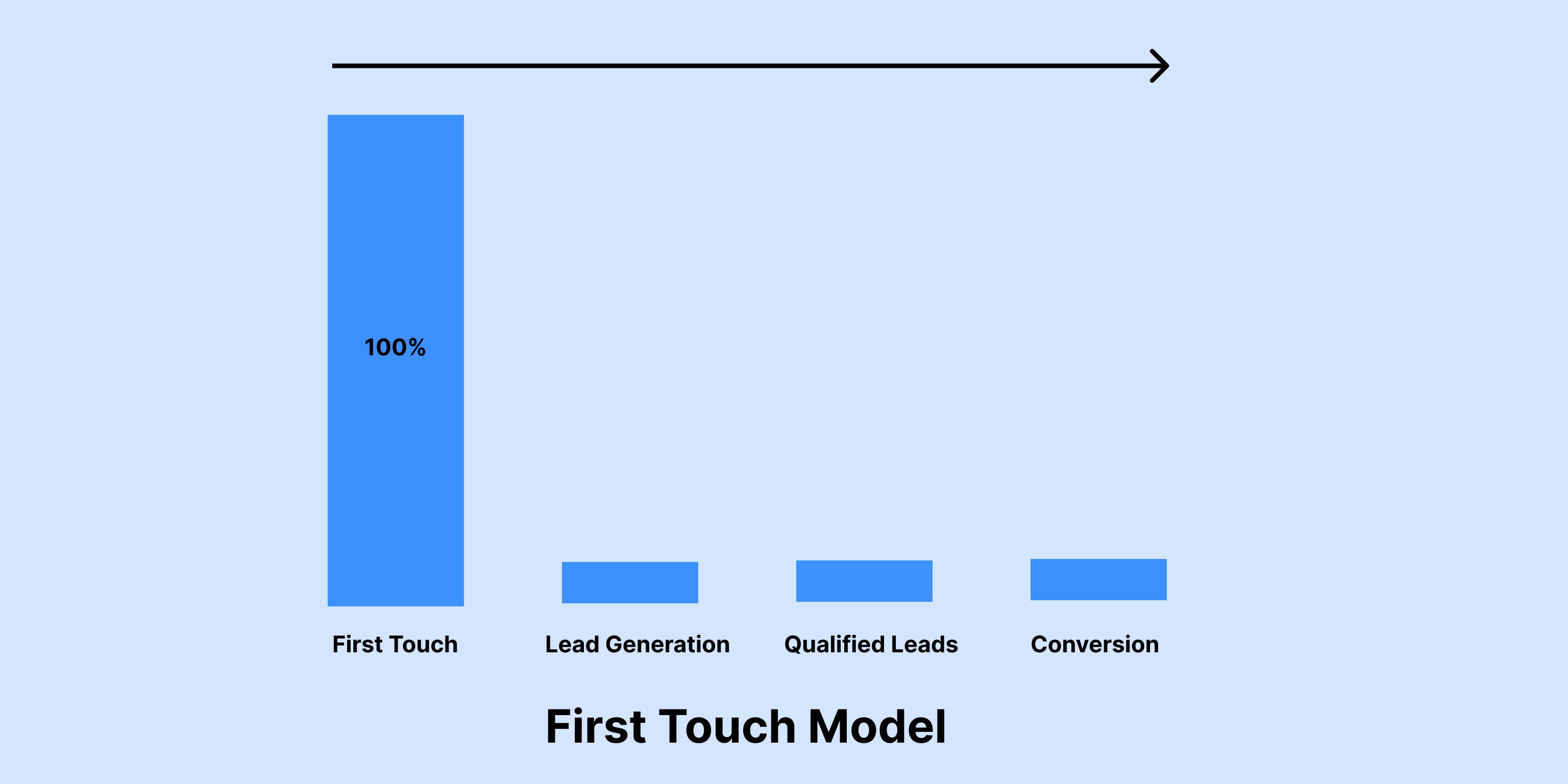
Qualified Lead Model (Last Touch)
In this model, the last touchpoint before conversion gets all the credit. It is valuable for understanding the final influencing factor in the customer journey.
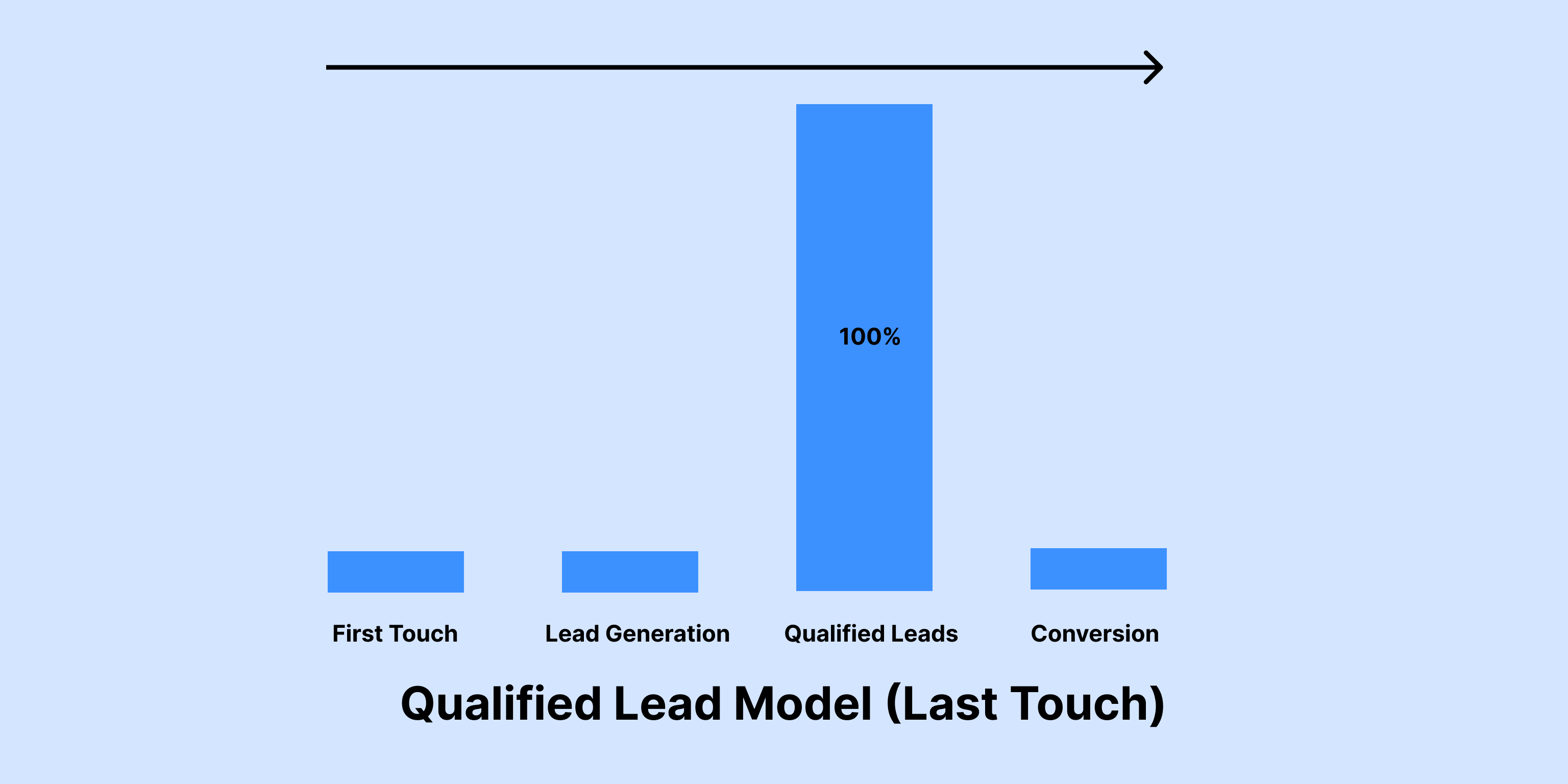
Lead Creation Model
This model assigns credit to the touchpoints that led to the creation of a lead, regardless of the conversion. It is particularly useful for tracking lead generation efforts.

Last Non-Direct Click Model
When a customer arrives through a non-direct click before converting, this model attributes the conversion to that specific touchpoint.
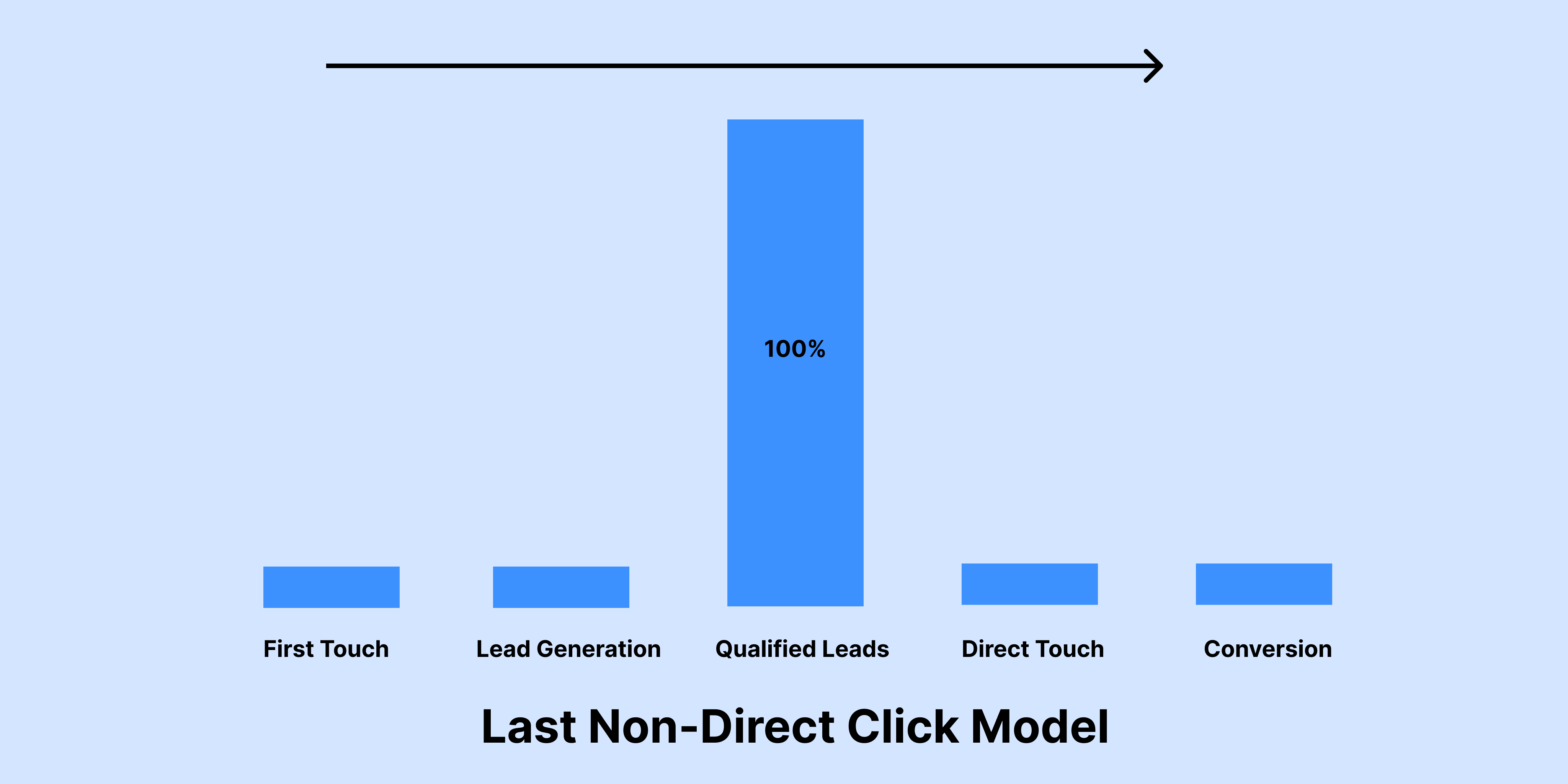
Last Most Important Touch Model
In this flexible model, businesses can assign credit to the touchpoint they consider most significant in the customer journey, providing a customized approach to attribution.
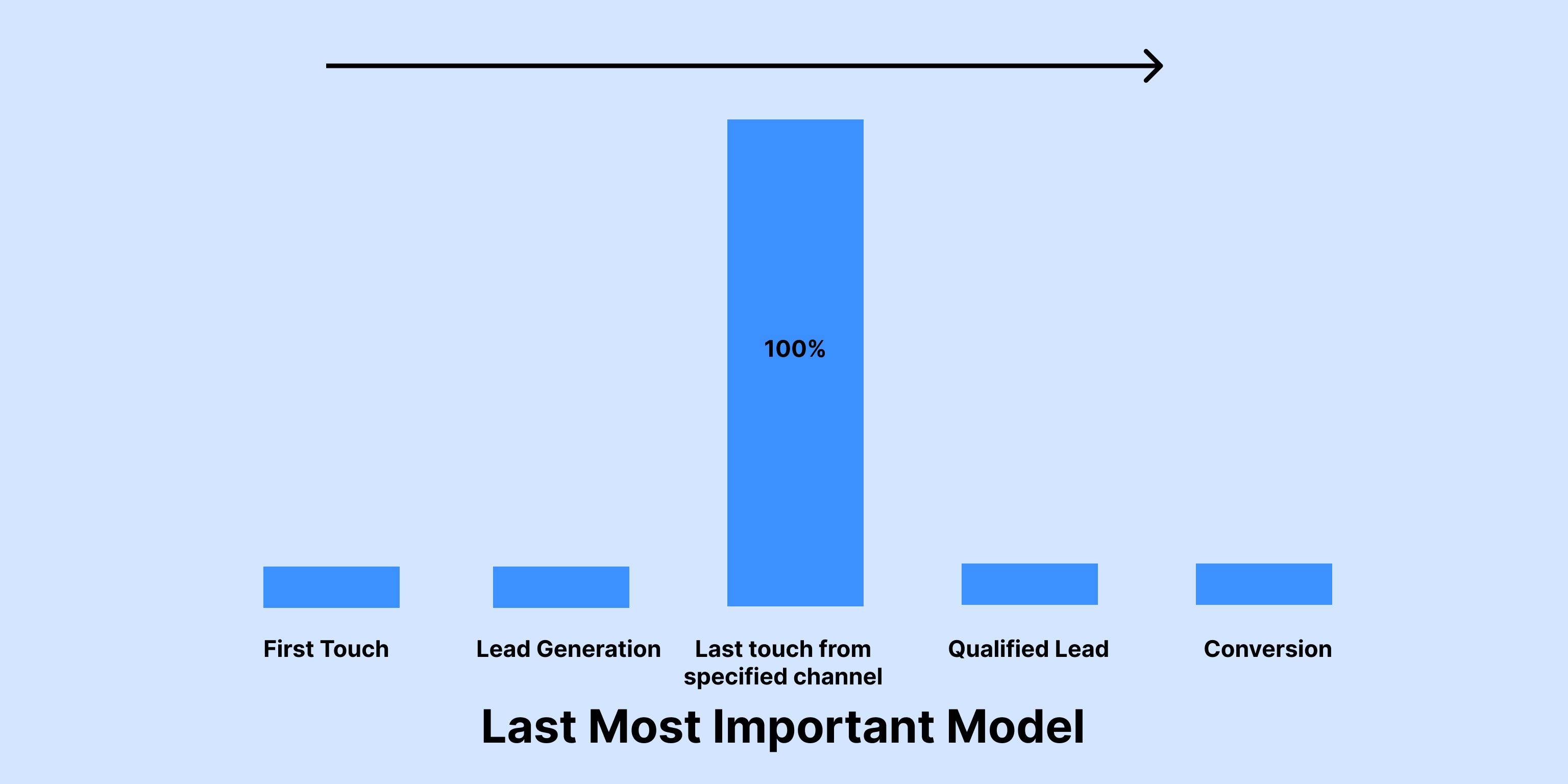
Multi-Touch Models
Linear Model
The Linear attribution model distributes credit evenly among all touchpoints in the customer journey. It offers a balanced perspective on the influence of various interactions.

Time Decay Attribution
This model assigns more credit to the touchpoints closer to the conversion, recognizing that the latest interactions are often more decisive.

U-Shaped Attribution
Also known as Position-Based attribution, this model allocates a significant portion of the credit to the first and last touchpoints, acknowledging their importance in the customer journey.

W-Shaped Attribution
This model emphasizes the importance of three key touchpoints: first touch, lead creation, and conversion, giving them higher credit.

Z-Shaped Attribution
In the Z-Shaped attribution model, the first touch, lead creation, and conversion receive the most credit, while other touchpoints share the remainder.

How Can AI-Powered Chatbots Help in Attribution Modeling
AI-powered chatbots play a pivotal role in attribution modeling by providing a consistent, interactive touchpoint throughout the customer journey. These chatbots can collect valuable data and insights at each interaction, making them a powerful asset in tracking and understanding the customer’s path to conversion.
Chatbots can also assist in real-time lead scoring and qualification. By analyzing the prospect’s responses and behavior during the chat, AI-powered chatbots can help businesses identify the most promising leads and direct them toward the desired conversion path. This information contributes significantly to attribution modeling, helping businesses prioritize and attribute credit to the right touchpoints.
Strategies for Using AI in Attribution Modeling

1. Data Integration: Ensure that your AI-powered chatbot is seamlessly integrated with your CRM and marketing automation tools to collect and analyze data effectively.
2. Advanced Analytics: Leverage machine learning algorithms to process the vast amount of data generated by chatbot interactions and gain deeper insights into the customer journey.
3. Personalization: Use AI to tailor chatbot interactions and content based on the prospect’s behavior and preferences. Personalized experiences have a more significant impact on attribution.
4. Multi-Channel Approach: Implement AI-powered chatbots across various channels to track and analyze interactions on websites, social media, and messaging apps for a comprehensive view of the customer journey.
Best Practices for Using Attribution Modeling Using AI-Powered Chatbots
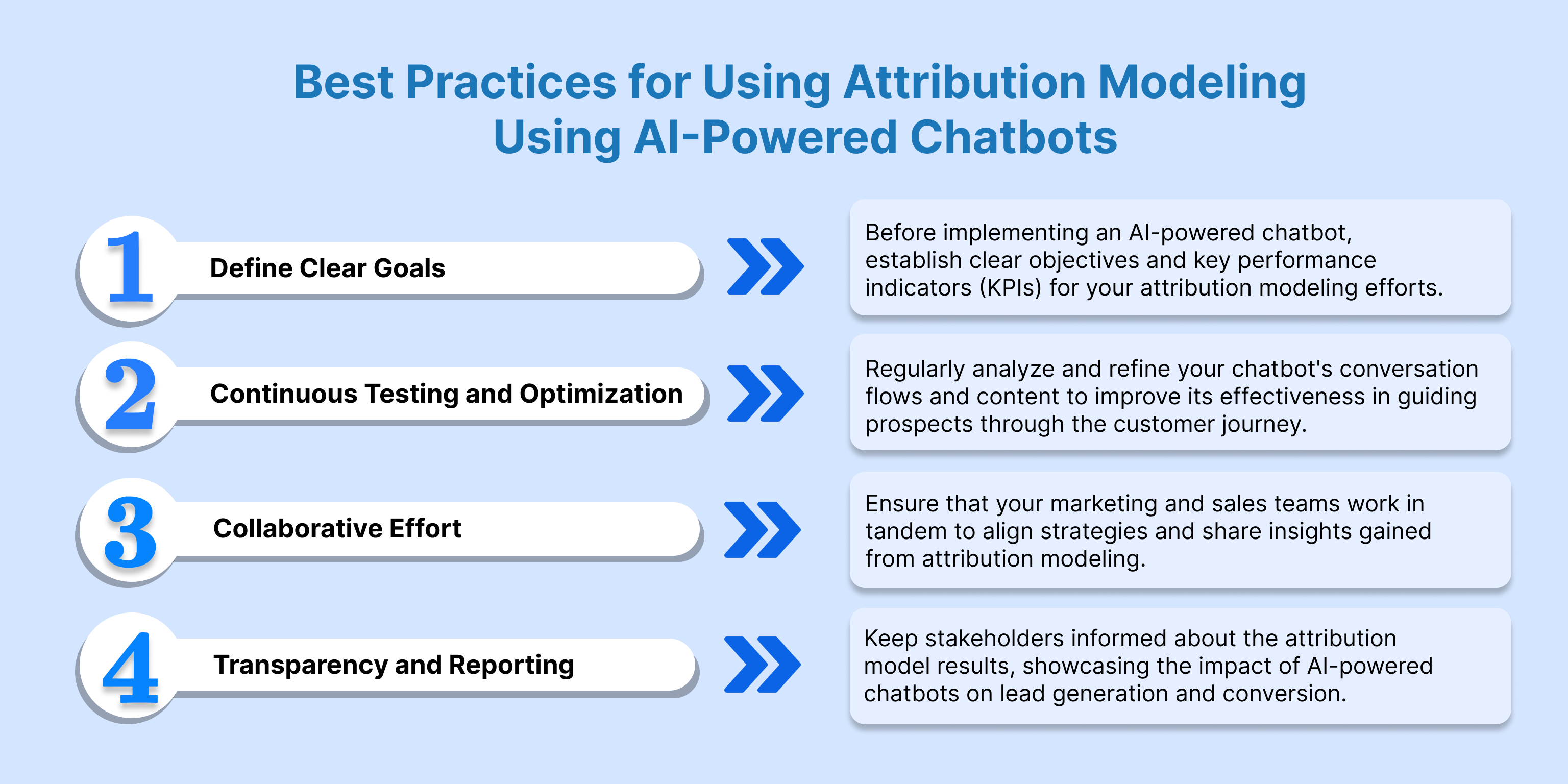
1. Define Clear Goals: Before implementing an AI-powered chatbot, establish clear objectives and key performance indicators (KPIs) for your attribution modeling efforts.
2. Continuous Testing and Optimization: Regularly analyze and refine your chatbot’s conversation flows and content to improve its effectiveness in guiding prospects through the customer journey.
3, Collaborative Effort: Ensure that your marketing and sales teams work in tandem to align strategies and share insights gained from attribution modeling.
4. Transparency and Reporting: Keep stakeholders informed about the attribution model results, showcasing the impact of AI-powered chatbots on lead generation and conversion.
Chat360: How AI-Powered Chatbots Aid Lead Generation Using Attribution Modeling
Chat360 is an AI-powered chatbot provider that excels in optimizing lead generation through effective attribution modeling. By harnessing the power of AI, Chat360 assists businesses in understanding the customer journey like never before. Here’s how Chat360 can help:
Comprehensive Data Analysis
Chat360 collects and analyzes data from customer interactions across multiple touchpoints, providing a holistic view of the customer journey. This data is invaluable for attribution modeling, helping businesses pinpoint the most influential touchpoints.
Real-Time Qualification
With AI-driven chatbots, Chat360 assesses prospect behavior in real-time, enabling instant lead qualification and routing. This feature streamlines the customer journey and ensures that the most promising leads are directed toward conversion.
Personalization
Chat360’s AI algorithms enable personalized interactions, tailoring content and responses based on the prospect’s preferences. Personalization enhances the impact of touchpoints and contributes to effective attribution modeling.
Integration
Chat360 seamlessly integrates with your CRM and marketing tools, ensuring that data flows smoothly and attribution modeling is supported by comprehensive, up-to-date information.
In conclusion, AI-driven lead attribution models are indispensable tools for businesses seeking to understand the customer journey and optimize their marketing strategies. Whether it’s identifying the most influential touchpoints, leveraging multi-touch models, or harnessing the power of AI-powered chatbots, attribution modeling has a pivotal role to play in modern marketing. Chat360’s innovative approach to lead generation, coupled with advanced attribution modeling, can be a game-changer in your quest to convert potential customers into loyal clients.
Sign up for a free trial!